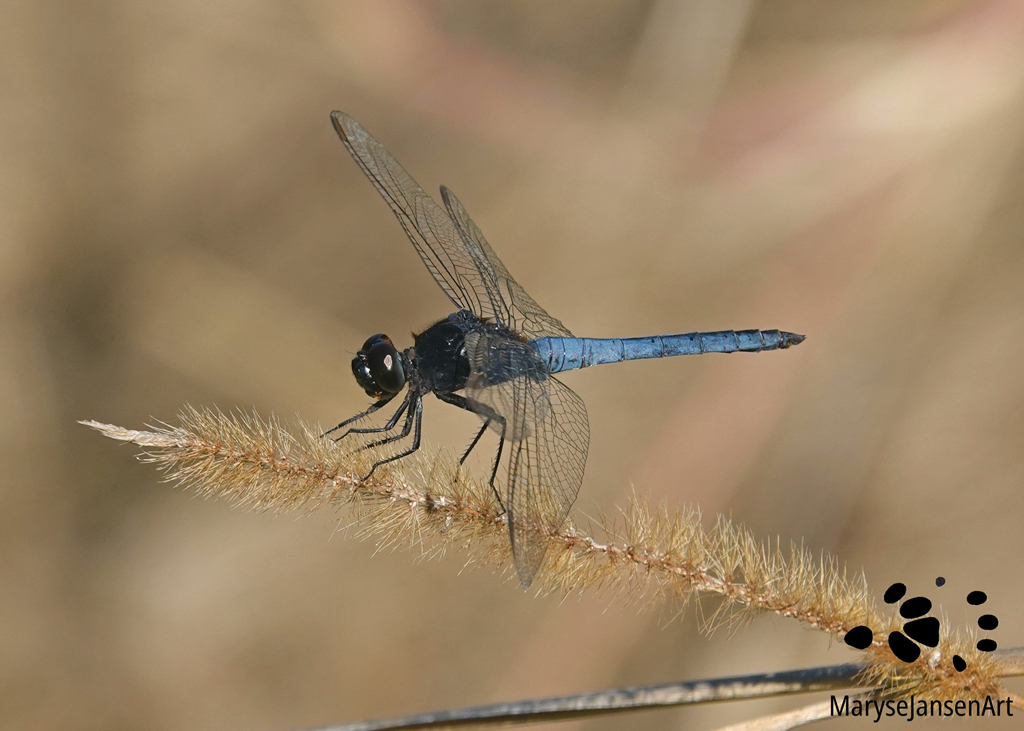Wildlife Photography with marysejansenart
Agile flier with big beautiful eyes
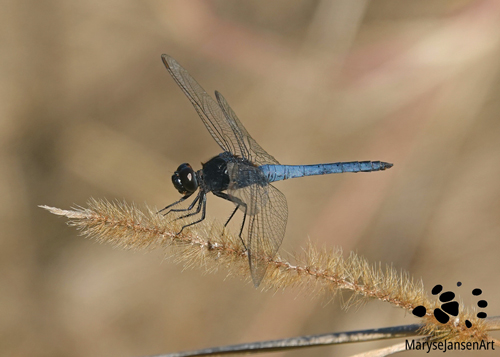
If you are following me you may have noticed that I have recently developed an interest in dragonflies. Being able to zoom in on them more has made me aware of their magnificent design, abundance in colour and great variety in species! Australia hosts over 325 species of dragonflies and damselflies!!
Table of Contents
Black-headed Skimmer
If you want to spot a dragonfly, you need to be near a source of fresh water. This is because they lay their eggs in or near the water and also because this environment provides them with lots of insects to prey on.
The strip of reeds near our local lake is literally teeming with them. I see dragonflies in a variety of sizes and colours! The blue one with the black head and thorax is definitely the most abundant here. It is called a Black-headed Skimmer (also known as Blue Scarlet) and is said to be the most common species in Greater Brisbane. It is shown in the featured image.
However, it is only the male Black-headed Skimmer that is so easily recognizable by the blue and black colouring. Females are yellow-brown in colour and are much more difficult to identify. They can be distinguished from other species by a black mid dorsal stripe.
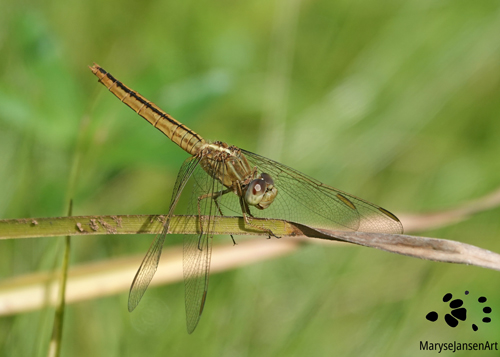
Dragonflies with brown colours are much more camouflaged on the brown stems of the reeds and dry grasses and also on the rocks and dirt that they tend to sit on which you will notice when you watch the video at the bottom of this post.
Dragonfly mating wheel
Generally, dragonflies fly during the warmer months of the year. Different species, however, may emerge at different times of the year so it is good to keep an eye open for this variety. Because we’ve had a wet summer, their breeding season has been extended and even though it’s already late in April, there are still many dragonflies around.
The life-cycle of a dragonfly is very interesting. The male attracts the female by showing off his bright colours, but she really doesn’t have much of a say in the whole thing. When he spots a female of his liking with his highly developed eye-sight, the male approaches her from behind in flight and grabs her tightly behind her head. From there the couple has to perform some serious aerial acrobatics to get into the mating position. To be able to bring their sex organs together they have to perform the so called ‘wheel formation’, where their bodies form an enclosed circle. Some species are able to actually copulate in flight while others prefer to perch.
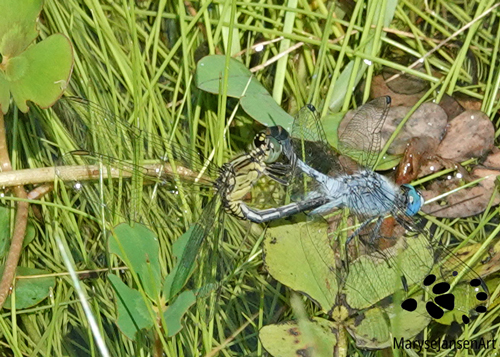
After the deed, the male needs to ensure that no other male mates with the female before she lays her eggs, so that his sperm will be the sperm that fertilises these eggs. He will guard her and chase off any other males that try to approach her.
As I mentioned above, the female lays her eggs in or near water. The larvae hatch after a period of anywhere between 6 and 30 days, depending on the water temperature. They live in the water where they feed on other insects, tadpoles and small fish. Dragonfly larvae moult up to 15 times before they climb out of the water and are ready for their metamorphosis into adulthood. Depending on the species, the nymphs live anywhere between 2 months up to 5 years in the water during this process.
During the final metamorphosis their exoskeleton splits open and the adult dragonfly emerges. Like butterflies, they need some time to unfold their crumpled wings and recover before they are ready to go. The adult dragonflies have an average life span of around 5 weeks, again with a great variety between species.
The dragonfly is a cold-blooded hunting machine
Interestingly, they are cold-blooded insects, so they need to warm up in the sun before they are ready to go on the hunt, just like reptiles do! This is why you may often find them sunbathing on rocks. When they have warmed up they are merciless predators and can fly at really high speeds. Some species can reach a soaring 50kmph or more!! They are very skilled and agile fliers and can fly in any direction: up, down, left, right, forward and even backward! They can change direction very suddenly.
Dragonflies are territorial and are capable of using an interesting technique to try and outsmart an intruder. This technique is called motion camouflage. This means they continually adjust their flight path, so that it seems to their opponent that they are not moving, while in fact they are rapidly coming closer, ready to attack! Very clever!
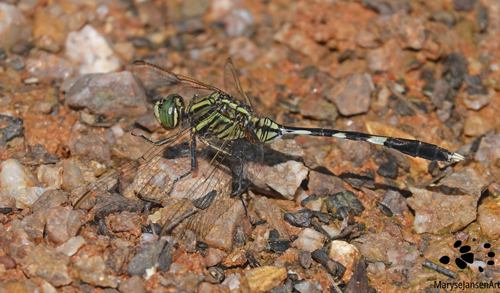
Dragonfly eyes
I’m intrigued by their eyes. They are gigantic compared to the rest of their body. The 2 large compound eyes consist of up to 30,000 facets each!! They take up most of the head and give, together with the flexible neck, the animal almost 360 degree vision! Each second they can process 200 images, which would make it appear that, compared to us humans who are thought to see 60 images per second, they see the world in slow motion!
Dragonflies need their really good eye-sight to be able to catch their prey on the wing. They mainly hunt on mosquitos and midgees, but also on other flying insects. Their magnificent eye-sight combined with their mastery flying skills makes them very efficient hunters. They catch up to 95% of pursued prey so they provide great natural mosquito control!!
Check out below the latest episode in my ‘Come for a walk in the Australian Bush’-series, featuring the dragonfly and some other interesting inhabitants of the undergrowth!
If you are interested in purchasing ‘Black-headed Skimmer’ or would like to see what the image looks like on the various products, please head to my shop. If you prefer ‘Black-headed Skimmer Female’, click shop here, and for ‘Slender Skimmer’, click shop here.
Check out more images of dragonflies in my gallery of Australian Insects!

